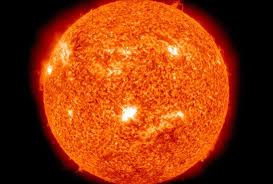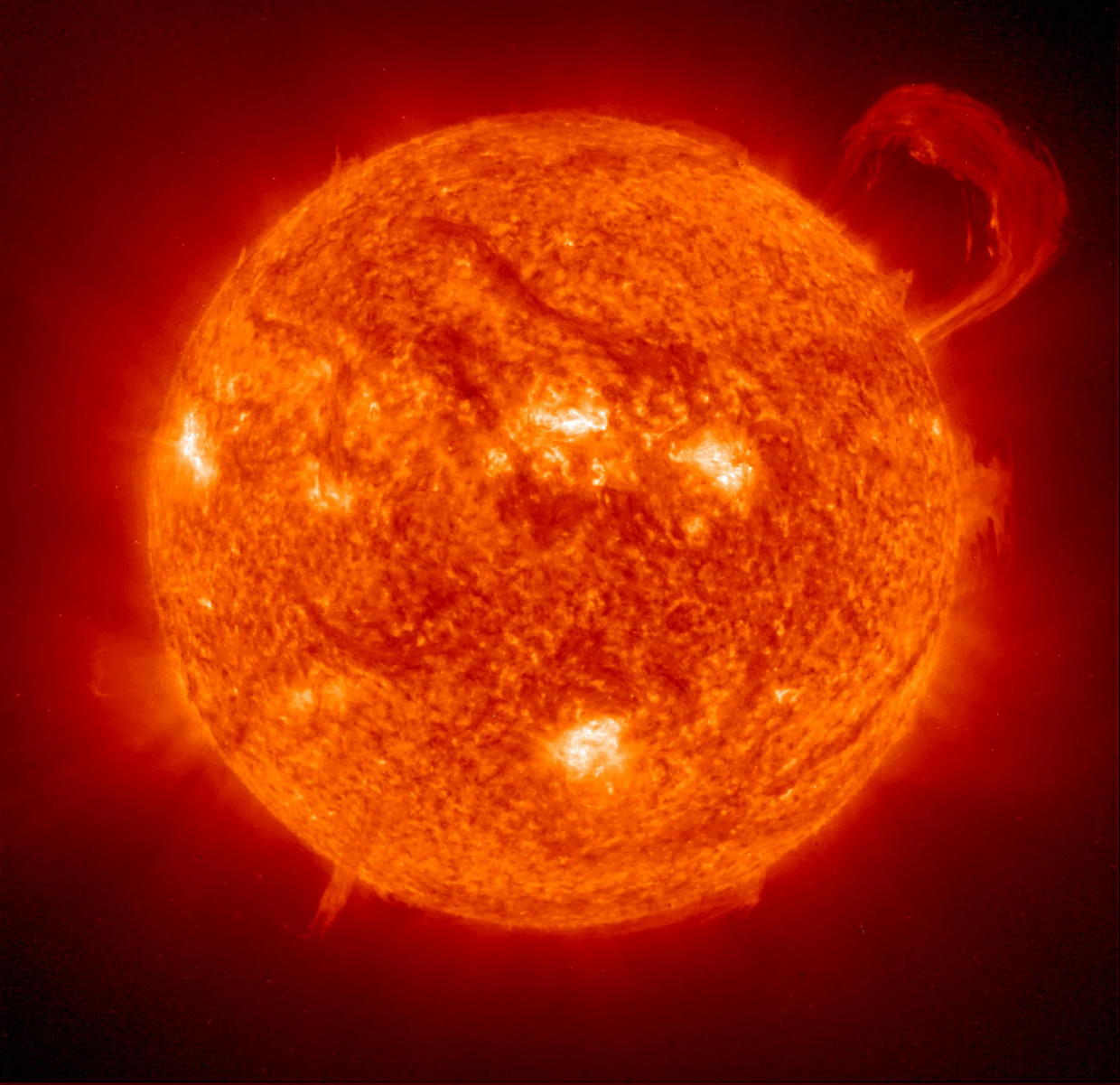The Sun, a yellow dwarf star, has been shining for approximately 4.5 billion years. Positioned at the heart of our solar system, it radiates heat and light, comprising mainly of hydrogen and helium. Its distance from Earth is roughly 93 million miles (150 million kilometers), and it serves as the solitary star in our solar system. The energy emitted by the Sun is fundamental to sustaining life on Earth, making its presence indispensable for the existence of life as we know it on our planet.

Observing from Earth, the Sun may seem like a steady source of light and warmth in the sky. However, it’s a dynamic star, continuously evolving and emitting energy into space. The field of science dedicated to studying the Sun and its impact throughout the solar system is known as heliophysics.
Being the largest entity in our solar system, the Sun boasts a diameter of approximately 865,000 miles (1.4 million kilometers). Its gravitational force plays a crucial role in maintaining the cohesion of the solar system, ensuring everything orbits around it, from the largest planets to the tiniest fragments of debris.
Although the Sun serves as the focal point of our solar system and is vital for our survival, it’s merely an average-sized star in terms of magnitude. Larger stars, some up to 100 times its size, have been discovered. Moreover, numerous solar systems consist of multiple stars. The study of our Sun provides valuable insights into the mechanisms governing distant stars.
At its core, the Sun reaches staggering temperatures exceeding 27 million °F (15 million °C), making it the hottest region. In contrast, its surface, known as the photosphere, maintains a relatively cooler temperature of around 10,000 °F (5,500 °C). One of the Sun’s intriguing mysteries lies in its outer atmosphere, the corona, which paradoxically becomes hotter as it extends farther from the surface. The corona can reach temperatures of up to 3.5 million °F (2 million °C), significantly surpassing the heat of the photosphere.
Orbit and Rotation
Situated within the Milky Way galaxy, the Sun occupies a position in one of its spiral arms known as the Orion Spur, extending outward from the Sagittarius arm. As the Sun traverses its orbit around the center of the Milky Way, it carries along with it the planets, asteroids, comets, and various other celestial objects within our solar system. Despite moving at an average velocity of 450,000 miles per hour (720,000 kilometers per hour), it takes approximately 230 million years for the Sun to complete a single orbit around the Milky Way.
In addition to its orbital motion, the Sun also undergoes rotation on its axis. With a tilt of 7.25 degrees concerning the plane of the planets’ orbits, the Sun’s rotation results in different regions spinning at varying rates. While the equator completes a rotation approximately every 25 Earth days, the poles experience a slower rotation, taking around 36 Earth days to complete a full spin due to the Sun’s non-solid composition.
Formation
Roughly 4.6 billion years ago, the Sun emerged within a vast, swirling mass of gas and dust known as the solar nebula. As the nebula succumbed to gravitational forces, it accelerated in rotation and transformed into a flattened disk structure. The majority of the nebula’s material converged towards the center, giving rise to the formation of our Sun, which constitutes 99.8% of the mass within our solar system. The residual matter contributed to the genesis of planets and other celestial bodies that now orbit the Sun. (Any remaining gas and dust were dispersed by the early solar wind emitted by the nascent Sun.)
Similar to all stars, the Sun will eventually exhaust its energy reservoir. As it approaches the end of its life cycle, the Sun will undergo expansion, transitioning into a red giant star. During this phase, its size will magnify to such an extent that it may engulf Mercury and Venus, potentially even Earth. Scientists estimate that the Sun has progressed past the halfway mark of its lifespan and predict it will persist for approximately another 5 billion years before evolving into a white dwarf.
Surface
While commonly referred to as the surface, the photosphere constitutes the initial layer of the solar atmosphere. Approximately 250 miles in thickness, it registers temperatures around 10,000 degrees Fahrenheit (5,500 degrees Celsius). Despite being significantly cooler than the scorching core, it remains sufficiently hot to cause carbon-based substances, such as diamonds and graphite, to not only melt but also boil. The majority of the Sun’s radiation emanates outward from the photosphere, diffusing into space.
Fun Facts!
- The sun is so big that more than a million Earths could fit inside it!
- The sun holds 99.8% of the solar system’s mass!
- Different parts of the Sun rotate at different speeds!
- Length of Day: 25 Earth days at the equator and 36 Earth days at the poles.
- Length of year: The Sun doesn’t have a “year,” per se. But the Sun orbits the center of the Milky Way about every 230 million Earth years, bringing the planets, asteroids, comets, and other objects with it.
https://science.nasa.gov/sun/facts/
